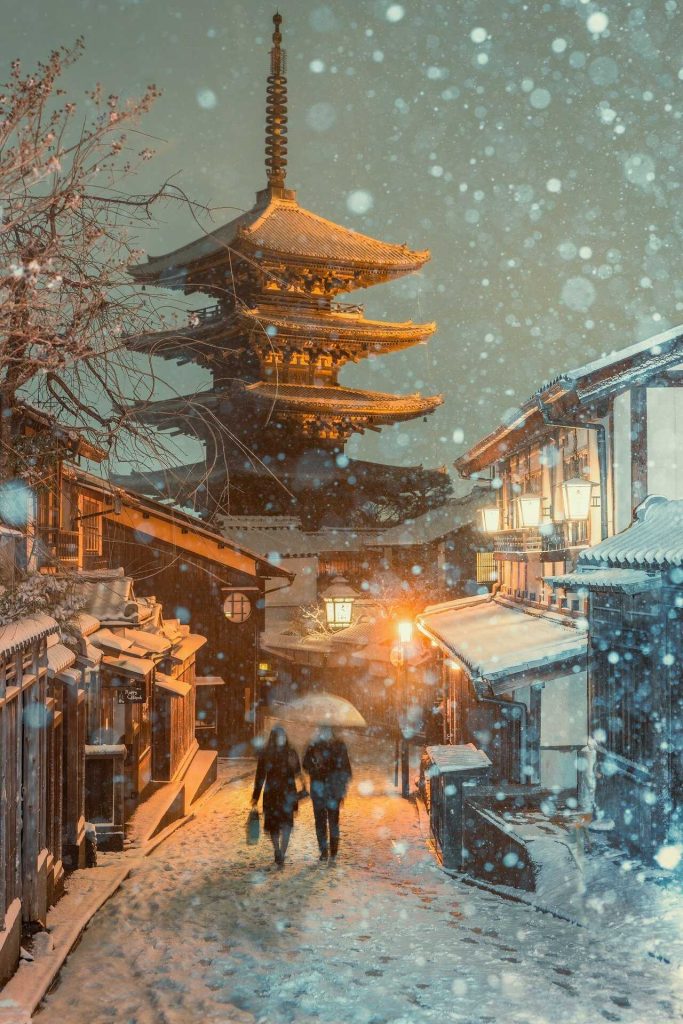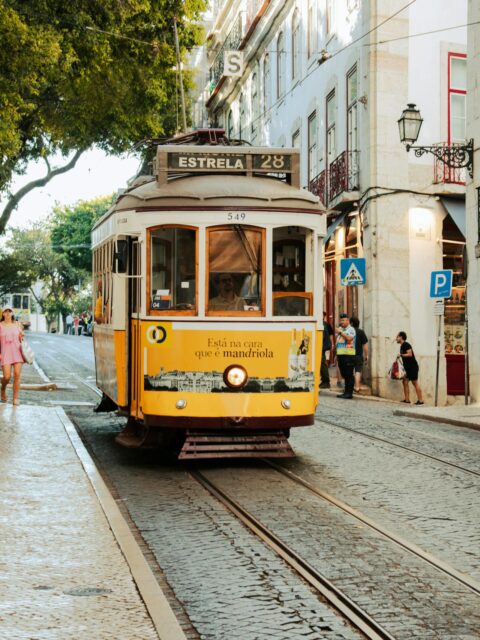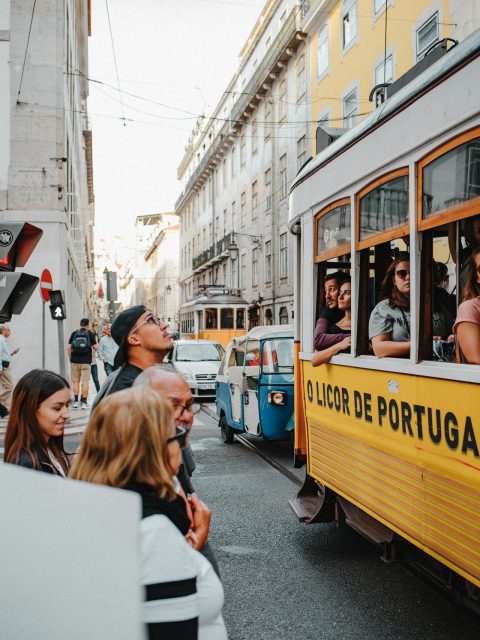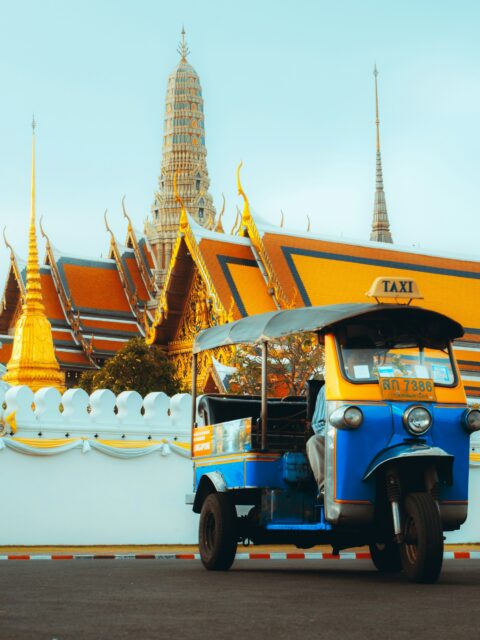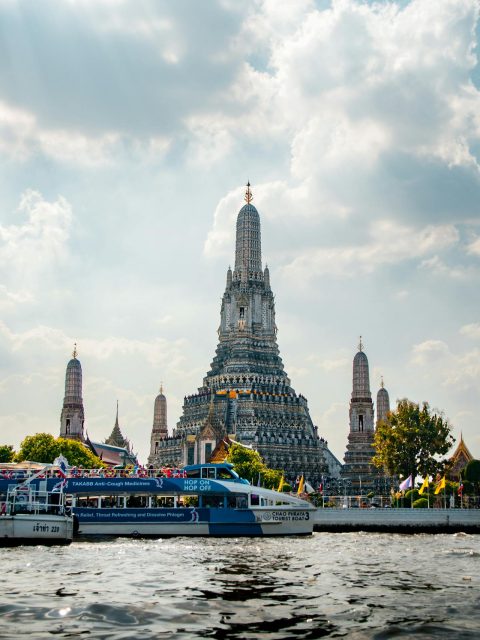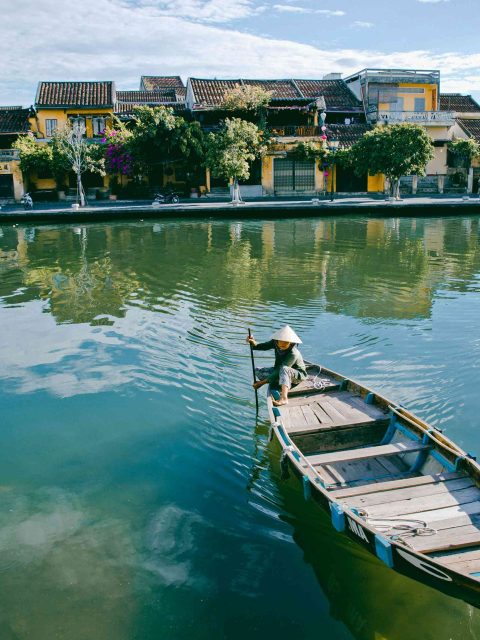Top 15 Things To Do in Kyoto for a Perfect 3-Day Itinerary
Enchanting Kyoto, historically Japan’s capital, remains a top destination. Often called the city of a thousand shrines, Kyoto is a mesmerizing mix of the ancient and the modern. Here, traditional geisha districts nestle between serene temple-covered hills and modern skyscrapers. Your adventure might include exploring gilded palaces, peaceful Japanese gardens, and timeless bamboo forests, or diving into the vibrant cultural scene through contemporary art galleries, eclectic boutiques, and kimono rental experiences. Discover the wealth of things to do in Kyoto in this comprehensive travel guide!
Chapters
- The Best Things to do in Kyoto
- 1. Visiting Fushimi Inari-Taisha
- 2. Exploring Kinkaku-ji Temple (Golden Pavilion)
- 3. Visiting Ginkakuji (Silver Pavilion)
- 4. Renting a Bike in Kyoto
- 5. Riding Down the Path of Philosophy
- 6. Geisha Sighting in Gion
- 7. Experiencing a Traditional Japanese Tea Ceremony in Kyoto
- 8. Experiencing Authentic Matcha in Kyoto
- 9. Learning the Art of Kendo in Kyoto
- 10. Making Sushi in Kyoto
- 11. Visiting Nishiki Market in Kyoto
- 12. Renting a Kimono in Kyoto
- 13. Day Trip to Arashiyama Bamboo Forest, Kyoto
- 14. Enjoying a Beautiful Day at Kamo River
- 15. Sunset at Yasaka-no-Tou
- 16. Day Trip from Kyoto to Nara
- Where to Stay in Kyoto?
- How Many Days in Kyoto?
- Getting to Kyoto
- What to Pack for Kyoto?
The Best Things to do in Kyoto
1. Visiting Fushimi Inari-Taisha
Fushimi Inari-Taisha is one of Kyoto’s must-visit attractions, known for its scenic 10,000 red torii gates that wind up Mount Inari. As one of Japan’s iconic Shinto shrines, this sacred site is dedicated to the God of Rice and offers visitors a captivating experience through its peaceful forest trails and historic shrines.
To enjoy a quieter experience, plan to arrive early, ideally before 7 a.m., as it can become busy with tourists after 9 a.m. For those seeking tranquil photo spots, walk further along the Kyoto torii gates path, where you can capture beautiful scenes with fewer crowds.
The trail to the peak of Mount Inari is about 4 kilometers and takes approximately 2-3 hours to complete, passing smaller shrines and Fushimi Inari fox statues, which symbolize the rice deity’s messengers. Along the way, you’ll find teahouses offering a rest amidst the serene surroundings.
Fushimi Inari Shrine is open 24 hours and free to visit. Sunrise provides a peaceful ambiance, while sunset offers picturesque views, though typically with larger crowds. This flexibility allows visitors to explore at their own pace, enjoying the unique atmosphere of this historic shrine.
2. Exploring Kinkaku-ji Temple (Golden Pavilion)
Kinkaku-ji Temple, also known as the Golden Pavilion Kyoto, is a must-visit landmark that embodies the elegance of Kyoto’s famous temples. Originally built as a shogun’s retirement villa, it became a Zen temple and has since drawn visitors worldwide for its serene beauty. The top two floors of this unique structure are covered in real gold leaf, creating a striking effect, especially on clear days when sunlight glistens off its golden facade.
The temple is set on the edge of Mirror Lake, adding to its beauty with reflections that seem almost surreal. While visitors cannot enter the temple itself, they can admire it from the water’s edge before continuing along the Kinkakuji gardens. A visit here generally takes around an hour, and it’s best to arrive early, ideally before 9 AM, to avoid large crowds.
The Golden Pavilion Kyoto is open from 9 AM to 5 PM, with a modest entry fee of 500 yen (about 3.50 USD). Getting here is convenient by bus or train, taking roughly 30-45 minutes from the city center. Be sure to check Google Maps for the latest route and timing.
3. Visiting Ginkakuji (Silver Pavilion)
Higashiyama Jisho Ji, also known as Ginkakuji (Silver Pavilion), is one of Kyoto’s most enchanting temples. Despite its name, the pavilion isn’t silver, but its simplicity and the serene gardens surrounding it make it a must-see attraction. The temple perfectly represents Japanese aesthetics, with its Zen gardens and peaceful surroundings blending harmoniously with the natural beauty of the nearby mountains.
Adjacent to the Philosopher’s Path, Ginkakuji is often considered the sister temple of the Golden Pavilion. Unlike the golden glimmer of Kinkakuji, Ginkakuji offers a more understated charm. The moss-covered gardens and natural wooden structures create a tranquil space where visitors can pause, reflect, and enjoy a moment of calm. The beauty of this Zen temple is so captivating that it’s hard to leave.
A visit to Ginkakuji takes about 30 minutes, and the entrance fee is ¥500. To avoid the crowds, it’s best to arrive early in the morning or late in the afternoon. You can reach the temple by walking along the Philosopher’s Path from Nanzenji, which takes about 30-45 minutes. Alternatively, a bike ride along the same path will take around 10 minutes.
For those coming from Kyoto Station, bus routes 5 and 17 will take you to Ginkakuji-michi. From the bus stop, it’s a short 10-minute walk to the temple.
4. Renting a Bike in Kyoto
If you’re looking to explore Kyoto in just a few days, renting a bike is one of the best ways to get around. Kyoto’s rich cultural landmarks and expansive landscapes are best enjoyed at a flexible pace, and cycling offers just that. During our visit, we rented bikes from Raku-chari Sanjo, a local Kyoto bike rental service near the Gion district, for ¥1000 ($6.50) per 24 hours. The longer you rent, the better the deals you might find.
Cycling through Kyoto gives you the freedom to explore the city’s vibrant streets while taking in its natural beauty. However, be mindful of where you park, as the city has strict rules against leaving bikes in undesignated areas. Fortunately, many tourist spots offer free bike parking, and there are designated parking areas across the city that charge between ¥100-200 per day. At temples and parks, always look for designated “Bike Parking” spots. At convenience stores, you can often park next to other bikes or leave someone with them.
The rental service will inform you of any cycling restrictions and provide you with bike locks. Most rental shops, including the one we used, accept returns until around 7 PM, but it’s always good to confirm this with the shop.
5. Riding Down the Path of Philosophy
One of the most serene experiences in Kyoto is cycling along the Path of Philosophy. This tranquil route stretches from Ginkaku-ji Temple in the north to Eikan-do Temple in the south. It’s not just a scenic path; it offers a peaceful escape from the bustling city, creating a spiritual journey for visitors. The Philosopher’s Path runs alongside a narrow canal, lined with trees that come to life during cherry blossom season and in autumn, when vibrant colors transform the landscape.
Along the way, you’ll discover charming boutique shops and cozy cafes, perfect for a relaxing stop. If you visit during spring or autumn, the cherry blossoms and autumn foliage make this path particularly beautiful and worth seeing. Regardless of the season, the Path of Philosophy provides a scenic, peaceful canal-side setting, free for everyone to enjoy.
While there aren’t many restaurants nearby offering healthy, plant-based food, convenience stores like Lawson or 7-Eleven can be great options for a quick and affordable lunch. You can find vegan-friendly onigiri with pickled vegetables, ready-to-go sushi, or even tofu. Pair it with a sugar-free iced green tea, and you’ve got yourself a budget-friendly meal.
Whether cycling or walking, this scenic route is an excellent way to immerse yourself in Kyoto’s natural beauty and cultural charm.
6. Geisha Sighting in Gion
One of the most captivating experiences in Kyoto is spotting a Geisha in Gion, a district known for preserving traditional Japanese arts and culture. Geishas, along with Maikos (apprentices) and Geikos (fully trained Geishas), are iconic figures of Japanese cultural sophistication. Contrary to outdated misconceptions, Geishas are highly skilled artists, proficient in various Japanese arts such as music, dance, and tea ceremonies. They perform at exclusive gatherings typically held in ochayas (teahouses) or ryōtes (traditional Japanese restaurants).
If you’re wandering through the Gion district, you may be lucky enough to catch a glimpse of a Geisha or Maiko as they head to their evening engagements. This area is where most of them live and work in Kyoto. However, it’s important to remember that they are professionals on duty, so avoid disturbing them by asking for photos or interacting with them directly.
For a more structured way to experience Geisha culture, consider booking a performance at Gion Corner, a theater that offers performances tailored to tourists interested in the traditional Japanese arts. Tickets are reasonably priced at 5,500 yen (approximately 37 USD), making it a great way to see Geisha performances without intruding on their work.
7. Experiencing a Traditional Japanese Tea Ceremony in Kyoto
A traditional Japanese tea ceremony is more than just drinking tea; it’s a profound cultural experience that embodies the principles of respect, harmony, purity, and tranquility. This ceremony involves the careful preparation and presentation of matcha, a finely ground green tea. Participating in a tea ceremony in Kyoto offers a deep dive into Japanese culture and the intricate art of tea preparation.You will not only observe the serene and meticulous process but also get a chance to prepare your own matcha alongside a Japanese sweet, under the guidance of a tea master. This experience is both educational and meditative, providing a moment of peace in the busy city.
8. Experiencing Authentic Matcha in Kyoto
Kyoto is renowned for its exceptional matcha, particularly the famous Uji matcha, considered one of the finest green teas in Japan. With a deep-rooted history of matcha production and consumption, Kyoto offers visitors a chance to experience matcha not only as a drink but also in a variety of culinary delights, including desserts, snacks, and even savory dishes.
Throughout the city, you can find high-quality matcha almost anywhere—from souvenir shops selling matcha powder to cafés featuring matcha-flavored items on their menus. However, for the best experience, look for matcha sourced from Uji, a region famous for producing the highest-quality matcha.
For those wanting an immersive Kyoto matcha experience, head to popular cafes like Charyo Tsujiri, Nakamura Tokichi, and Umezono, where you can indulge in a variety of matcha treats such as pancakes, sundaes, and the traditional matcha tea ceremony. These spots are ideal for experiencing the true essence of Kyoto’s matcha culture.
9. Learning the Art of Kendo in Kyoto
For those seeking a deep dive into authentic Japanese culture, trying Kendo in Kyoto is an incredible opportunity. Kendo, a traditional Japanese martial art, originated from the sword combat techniques of the samurai known as kenjutsu. It involves the use of bamboo swords (shinai) and protective armor (bōgu). Although not as internationally famous as Judo or Jujutsu, Kendo is widely practiced across Japan and offers a unique insight into the discipline and techniques of Japanese swordsmanship.
Participating in a Kendo class in Kyoto allows you to experience the tranquility and etiquette of a traditional dojo while also learning the art of the sword. Whether you’re a beginner or have some experience, Kendo is an unforgettable way to connect with Japan’s warrior past and gain a better understanding of its martial traditions.
10. Making Sushi in Kyoto
For sushi enthusiasts, taking a sushi-making class in Kyoto is not just an activity; it’s an experience. Under the guidance of a top sushi chef in Kyoto, we spent an hour learning the intricate art of sushi preparation. The best part? We got to taste our own creations afterward, putting our new skills and the quality of our Japanese culinary creations to the test.
11. Visiting Nishiki Market in Kyoto
Nishiki Market, often referred to as Kyoto’s kitchen, offers a vibrant and flavorful cultural experience that’s perfect for food lovers. This bustling five-block-long shopping street is filled with hundreds of Nishiki food stalls and restaurants, each offering a wide variety of local specialties, fresh seafood, produce, and unique souvenirs. Whether you’re craving sushi, sweets, or simply want to soak in the lively atmosphere, Nishiki Market Kyoto has something for everyone.
A great way to make the most of your visit is by joining a food tour led by a local guide, who can point out the best food stalls and explain the many delicious and sometimes unusual snacks.
The market is open from around 10 AM to 6 PM, although hours vary depending on the stall. Keep in mind that some stalls may close on Wednesdays or Sundays, and it’s best to bring cash as many vendors do not accept cards.
12. Renting a Kimono in Kyoto
One of the most quintessential Kyoto experiences is renting a kimono. This activity is popular among both men and women and is especially visible in the Gion district, where you’ll see numerous tourists donned in colorful kimonos, exploring the area. It’s important not to confuse them with Maiko, who are apprentice Geisha.Kimono rental shops are abundant in Kyoto, making it easy to join in on this fashionable activity. Most shops offer rentals for the entire day, allowing ample time to visit multiple scenic spots for photos. However, be aware that while kimonos are stunning, they aren’t the most comfortable attire for long walks, especially the traditional footwear. Plan your route wisely to maximize comfort and photo opportunities.
13. Day Trip to Arashiyama Bamboo Forest, Kyoto
The Arashiyama Bamboo Forest is one of Kyoto’s must-visit destinations, offering a magical and tranquil experience for visitors. Located just a 20-minute train ride from the bustling city center, the charming town of Arashiyama is home to this stunning Kyoto bamboo grove, where towering bamboo trees create an ethereal, tunnel-like path. As you walk through, the sunlight filtering through the bamboo creates a golden glow, perfect for capturing beautiful photos.
Walking through the Arashiyama Bamboo Forest provides a calming escape from the city’s hustle and bustle. The gentle sound of the bamboo swaying in the breeze adds to the serene atmosphere. Aside from the bamboo grove, Arashiyama is also home to several notable temples and gardens, including Tenryu-ji Temple, Jōjakkō-ji Temple, and Okochi Sanso Garden, which are worth exploring.
Entry to the Arashiyama Bamboo Forest is free, but some nearby temples may have a small admission fee. The grove is open 24 hours a day, but for the best experience, it’s recommended to visit at sunrise when the light is soft, and the crowds are minimal. After 9 AM, the area tends to get busy, making it more challenging to take photos without crowds in the background.
14. Enjoying a Beautiful Day at Kamo River
The Kamo River in Kyoto offers a peaceful and scenic escape, ideal for enjoying the outdoors. Flowing through the heart of the city, this serene spot attracts both locals and tourists who come to relax, stroll along the Kyoto riverside walk, or simply enjoy the fresh air. On weekends, the riverbanks are lively with families, friends, and couples engaging in activities like biking, picnicking, or fishing. It’s a perfect option for a free and relaxing day out.
The Kamo River Kyoto is also a prime location for sightseeing, offering beautiful seasonal landscapes. In spring, cherry blossoms line the riverbanks, while in summer, dining on riverbed platforms provides a unique experience. During autumn, the vibrant foliage adds a warm glow to the area, and in winter, the tranquil scene creates a peaceful atmosphere. With popular nearby attractions like Gion and Shimogamo Shrine, the Kamo River is an ideal place to visit during your trip to Kyoto. Whether you’re looking for a quiet riverside picnic, a scenic walk, or a moment to enjoy the changing seasons, the Kamo River provides the perfect backdrop for memorable moments.
15. Sunset at Yasaka-no-Tou
For photographers and travelers, experiencing a Yasaka-no-Tou sunset is one of the most picturesque and serene activities in Kyoto. This iconic pagoda, towering over the Higashiyama District, offers stunning views, especially as the sun sets and the sky turns shades of gold and pink. While the area can be crowded during the day, it becomes quieter as evening approaches, making it an ideal time to capture the Yasaka Pagoda Kyoto in a peaceful atmosphere.
Getting to Yasaka-no-Tou is easy. You can take bus number 206 from Kyoto Station to the Gion bus stop, or use the Gion-Shijo Station on the Keihan Line or Kyoto-Kawaramachi Station on the Hankyu Line. Alternatively, a scenic 20-30 minute walk from Kiyomizudera through the narrow streets of the Higashiyama District to Yasaka Shrine is highly recommended. This route allows you to explore historic Kyoto while making your way to the pagoda.
For the best photos, patience is key. Waiting about an hour after sunset often provides a chance to capture the pagoda without crowds. The combination of the Yasaka-no-Tou sunset and the tranquil surroundings of the area makes it a must-visit for anyone exploring Kyoto.
16. Day Trip from Kyoto to Nara
While not located in Kyoto, a day trip to Nara from Kyoto is a must-do when visiting the region. Just a 45-minute train ride away, Nara is known for its tranquil Nara Park, home to hundreds of free-roaming deer. These deer are revered as messengers of the gods and have become symbols of the city.
Upon arriving at Nara Park, you’ll be welcomed by these friendly deer, who are often eager for some treats. You can purchase deer crackers (200 yen or about 1.50 USD) from vendors around the park, which are safe for the deer. It’s important to avoid feeding them human food, as it can harm their health. A visit to Nara Park is a wonderful, cost-free activity, particularly enjoyable for families and wildlife enthusiasts.
Beyond the deer, don’t miss the awe-inspiring Todaiji Temple, an architectural masterpiece and one of Japan’s most significant historical sites. If you visit in the fall, you’ll be treated to a stunning display of autumn foliage with warm reds, oranges, and yellows covering the park. This scenic setting adds another layer of beauty to the experience.
Where to Stay in Kyoto?
Kyoto offers a wide range of accommodations, from modern Airbnb rentals to traditional ryokans, each providing a unique way to experience the city. Choosing where to stay depends on the type of trip you’re planning. If you’re looking to explore beyond Kyoto, we recommend staying in Shimogyo, near Kyoto Station, which makes day trips out of the city more convenient. If your focus is on Kyoto’s cultural heart, consider booking a hotel in Nakagyo (Kyoto’s central district) or Gion, the traditional Geisha district.
For travelers seeking a more home-like environment, Airbnb has many options that allow you to feel immersed in local life. A standout is the BnA Alter Museum, an art suite curated by EYE, which blends modern creativity with comfortable accommodations. If you’re new to Airbnb, promotional codes can make your stay even more affordable.
For those wanting a more traditional Japanese experience, Yadoya Manjiro in the historic Higashiyama District is an excellent choice. This ryokan is highly praised for its authentic atmosphere and outstanding service. Staying here allows you to fully immerse yourself in Kyoto’s culture, combining luxury with tradition in one memorable stay.
How Many Days in Kyoto?
Kyoto offers so much to explore, making it worth spending extra time in this beautiful city. If you’re wondering how many days in Kyoto is ideal, it really depends on your preferences and travel plans. A well-planned 2-day trip will allow you to see many of the city’s famous highlights, such as Kinkaku-ji Temple, Fushimi Inari Shrine, and the Arashiyama Bamboo Forest. While two days may not be enough to experience everything Kyoto has to offer, it will provide a great introduction to its rich culture and history.
If you have more time, a 3-day itinerary will give you the chance to explore additional temples, gardens, and some lesser-known attractions. Extending your visit to 4-6 days will allow you to include day trips to nearby destinations such as Nara Park, Koyasan, or even Universal Studios Japan in Osaka.
For travelers with a tight schedule, a 2-day visit will still give you a good feel for the city and its beauty. However, if you have the flexibility to stay longer, you’ll have the opportunity to dive deeper into Kyoto’s serene gardens, historic sites, and unique cultural experiences.
Getting to Kyoto
Kyoto is easily accessible, thanks to Japan’s highly efficient transportation system. If you’re flying into Japan, the closest airport to Kyoto is Osaka Itami Airport, which is about a 50-minute drive by shuttle bus. Alternatively, Kansai International Airport, located slightly further out, is around a 70-minute train ride to Kyoto. Both routes are covered by the Japan Rail Pass, making travel convenient.
For travelers coming from Tokyo, the Shinkansen (bullet train) is the fastest option. The Nozomi train will get you to Kyoto in about 2 hours and 20 minutes, while the Hikari service, covered by the Japan Rail Pass, takes around 2 hours and 40 minutes. If you don’t have the pass, the Kodama service is a cheaper alternative, though it takes longer. If you’re coming from Osaka, the train ride on the JR Kyoto Line takes just under 30 minutes and costs around 600 yen, also included in the Japan Rail Pass.
Getting Around Kyoto
Once in Kyoto, the city is easy to navigate. The well-organized grid system simplifies travel, even for first-time visitors. Although Kyoto has only two subway lines, they connect to most major attractions. The bus system is also highly efficient and covers a wider area than the subway.
Exploring Kyoto on Foot
For those who prefer walking, Kyoto’s flat streets make it ideal for exploring on foot, with Google Maps being a helpful guide. Walking not only allows you to discover hidden gems but also lets you experience the city’s atmosphere at a leisurely pace.
Renting a Bike in Kyoto
Another excellent way to get around is by renting a bike. There are many bike paths, especially along the river, making cycling a peaceful and scenic way to explore the city. You can rent bikes from The Good Day Velo Bikes & Coffee Kyoto, and a one-day bike parking pass costs just 200 yen (about 1.50 USD). Remember to park your bike in designated areas.
What to Pack for Kyoto?
Deciding what to pack for a trip to Kyoto can feel overwhelming due to the city’s distinct seasons and varying weather conditions. Kyoto, like much of Japan, experiences four distinct seasons, each with its own unique charm and challenges. Here’s a guide to help you pack efficiently based on the season you’re visiting:
- Spring (March to May): Spring in Kyoto is famous for the cherry blossom season (late March to early April), making it one of the busiest times of the year. Pack light layers, a waterproof jacket for occasional showers, and comfortable walking shoes for enjoying the sakura. Don’t forget an umbrella, as rain is common during this time.
- Summer (June to August): Summer can be hot, humid, and rainy, especially in July and August. Pack breathable clothing, a sun hat, sunscreen, and an umbrella for sudden downpours. This is also the time to pack lightweight outfits that can handle the heat and humidity.
- Autumn (September to November): Autumn in Kyoto is stunning, especially when the leaves change color in late September and October. Pack warm layers, a light jacket, and perhaps a scarf to stay cozy while enjoying the beautiful fall foliage. The weather is generally mild, but evenings can get chilly.
- Winter (December to February): Winter in Kyoto is cold but not freezing. Pack a heavy coat, thermal wear, a warm hat, and gloves, especially if you plan to visit temples, which can feel quite cold. Kyoto’s winter weather won’t stop you from exploring, but being prepared for the chill will make your visit more enjoyable.
Each season in Kyoto offers its own unique experience, from the blooming cherry blossoms in spring to the vibrant fall leaves. No matter when you visit, being prepared with the right clothing and accessories will ensure a comfortable and memorable trip.


